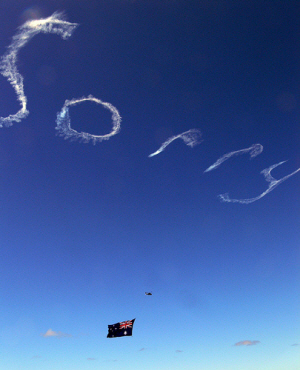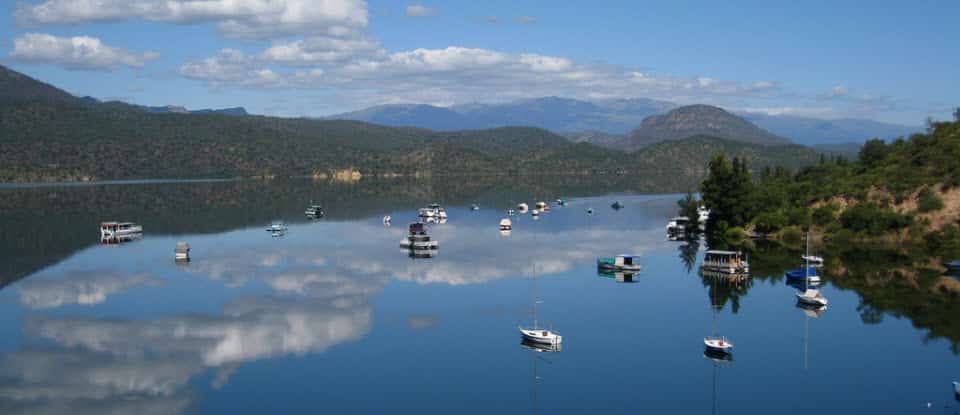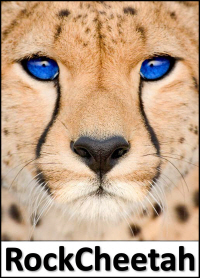NOTE: This post was originally written as a comment to a Tnooz story on the Tourism Australia There’s Nothing Like Australia television commercial. Due to the large number of video links – some of them to truly great ads, I decided to post it here (as well as expand the content a little) to make the video viewing a bit more of a single window affair.

I love pretty much everything about Australia. Their idea for a user-inspired campaign was genius. Too bad the ad was simply annoying.
The genesis of the ad was terrific – part of a clever promotion / competition that had over 30,000 photo submissions to date from Australians providing their favorite vacation memories.
Tnooz felt the ad was being intentionally ironic in an attempt to gain viral traction. I can wholeheartedly agree with Tnooz that the ad is ironic. Unfortunately, based on some of the quotes I have read from the advertising agency and Tourism Australia officials responsible for its production, the irony was unintentional.
Matt Eastwood, DDB national creative director, is quoted in Australian media publication Mumbrella stating: “The TV spot is unique in that we go back to some of the iconic locations that have not featured in Tourism Australia’s advertising in a while, such as Uluru, the Twelve Apostles, the Gold Coast and the camels on the beach in Broome.”
Eastwood added that they chose to write a song for the ad because of the “universal appeal” music has with people, regardless of whether they are from an English or non-English speaking country.
Mumbrella also quoted Chris Brown, DDB group MD, saying: “The ad not only shows the depth of what Australia has to offer, as a new and exciting experience, but through research we realized it was also important to capture the welcoming nature and warmth of the Australian people.”
Tourism Australia’s managing director, Andrew McEvoy, was quoted by
On paper, it should have worked. But it didn’t.
The bar had been set fairly high by the refreshingly mystical Tourism Australia “Come Walkabout” commercial from 2008, created by Baz Luhrmann:
It seems that the tourism group in some ways elected to explore the far end of the creative spectrum by leveraging user-generated content and an agonizingly simplistic song. It almost seems that the producers grossly underestimated the intellect of their audience that had been embraced earlier by Luhrmann.
The Luhrmann ad, although critically acclaimed, was reportedly not commercially successful, but its release also coincided with a global financial meltdown. I’m not sure if any spot in the history of travel advertising could have succeeded in selling Australia as a leisure destination in that business environment.
Tourism Australia spent big $$ with DDB Australia using director Michael Gracey who had previously directed the excellent and highly viral Evian “Roller Babies”:
Gracy also directed the enjoyable Lipton “Tokyo Hotel” spot featuring Hugh Jackman:
as well as another exceptional and highly viral commercial, the T-Mobile “Dance” video:
Josh Abrahams, who wrote the song also has a pedigree, having co-produced the soundtrack to Baz Luhrmann’s film Moulin Rouge:
So why didn’t it work?
It was not the strategy, and definitely not the:
Tagline – There’s Nothing Like Australia
(Great – and factual)
Images – People enjoying the experience Australia
(Very Good – visually engaging)
Messaging – Eliminate preconceived stereotypes of Australia
(Good – Plus, they aggressively solicited examples from Australians to support this premise)
Below is a Tourism Australia video clearly defining their goal of defeating stereotypes in this ad soliciting content for the campaign from the Australian populace:
It is incredibly ironic that the ad that was ultimately produced pretty much reinforces the stereotypes that they were attempting to dispel as inaccurate and superficial.
I am all for playing to strengths and using iconography in tourism promotions, but there is a distinct difference between staying on message to create good advertising and going off message, which normally results in ineffectual bad advertising.
For me, a major problem was the damn song.
It appears that the objective was to capture something simple and memorable – a catchy melody that would stick with the viewer.
And this is where they went wrong. The grating, sing-songy tune not only gives one the desire to immediately change the channel, but also unintentionally invalidates each cornerstone of the campaign:
- The song is not unique – There are innumerable simplistic jingles just like it
- Listening to the song is not an enjoyable experience – it is not a good song
- The song reinforces bad stereotypes of low quality travel-related jingles
Tourism Australia completely missed the point that the design of their relevant, user generated campaign could be undone by the one component that was not user generated.
The final result was not a clever Tourism Australia strategy. It was bad execution. McEvoy was also quoted by the Herald Sun earnestly stating “Maybe people will start singing along and make it a bit of an anthem for Australia.” That is not irony – that is delusional.
Voting on Mumbrella’s YouTube page indicates that more people dislike the ad than like it. That is a very bad omen for any advertisement that is designed to attract consumers – especially those spending hundreds of dollars flying thousands of miles.
This narrow-miss style disaster has happened to Australia before – when the 2006 “So Where the Bloody Hell Are You?” ad was banned in the UK.
Again, a potentially great ad (albeit focused on reinforcing Australian icons & stereotypes,) this time, undone by an easily modified tag line that prevented it from becoming wildly successful.
Since all these other ads have been included, I would be remiss to leave out the truly iconic ad from 1984 that introduced America to both Australia and Paul Hogan in the “Come Say G’Day” campaign:
Of course, it is easy to play Monday-morning quarterback and criticize the “Nothing Like Australia” ad without providing recommendations for improvement. I have two:
First, it would have been a much better idea to extend the direction of the campaign and have a competition to select a user-composed song.
If that was considered too risky, then they could still have gone the professional route.
My suggestion would have been to commission a song by Delta Goodrem. Not only is she a talented Aussie native, but she knows how to craft memorable melodies. Goodram has done this sort of work before, penning “Together We Are One” for the Opening ceremony of the Commonwealth Games in 2006:
Plus, Goodrem is a much more relevant songwriter than Josh Abrahams whose big chart success was Puretone’s musically formulaic and lyrically banal “Addicted to Bass” in 1998:
Interestingly, Goodrem also has previous experience collaborating with user generated content. Her “You Will Only Break My Heart” video includes karaoke submissions from fans that are effectively incorporated into the creative execution:
Goodrem even has a history with director Gracey, as he had directed Goodrem’s 2003 “Innocent Eyes” music video:
My bet would have been on someone like Goodrem to create a more modern and unique song, while providing a memorable melody that could have dramatically altered the impact of the ad.
A great song could have made “There’s Nothing Like Australia” a great campaign.
So what should you do? Watch the ad – Just make certain the sound is off. Then book a trip to Australia. Because truly, There’s Nothing Like Australia. It’s a magical place with fantastic people. If you have not been there – you need to visit. If you have been, there is probably much more to explore.
Experiencing Australia is like attending a great feast. Unfortunately, this time, the unforgettable meal was served on a cracked, dirty plate with bent utensils.
Footnote: Of course, if you want to see a truly edgy Tourism Australia ad, try the one below reportedly directed and narrated by Russell Crowe (I have no idea if the New Zealand born, Australian based actor was actually involved – if not, the creator did a great job with the voice-over.) It’s a mystery why this never went viral, having apparently received fewer than 20,000 YouTube views:




